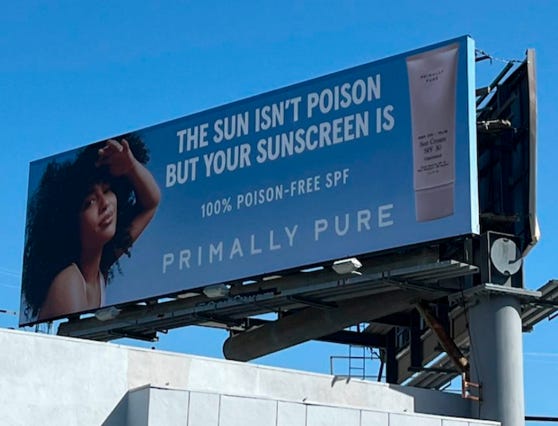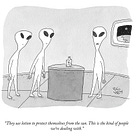How Worried Should You Be?
investigating recent news about gel nails, chemical peels and false advertising
Hello!
Happy Tuesday. This weekend I celebrated my one-year wedding anniversary, which gave me a great excuse to revisit all of my wedding photos and remember how happy I was with my skin and how much I love the ZIIP Halo. It was also a good excuse to leave my laptop at home and attempt something I rarely do: write a Hotline Skin issue in one sitting. Please excuse any typos or run-ons.
Really quickly before we get into today’s post—if you currently are struggling with postnatal, stress induced, perimenopausal, PCOS or androgenetic alopecia related hair loss, and would be open to potentially testing a product and sharing photos of your hair, can you please take 2 minutes to fill this out?
There’s been so much beauty news floating around over the past couple of weeks—the same questions and concerns have come up during facials with clients and among friends in my group chats. It’s truly awesome to see how tuned in people are and today I want to dive into some of these headlines a bit more.
Should you be worried about gel nail polish?
First things first, no, you don’t. The EU recently announced a ban on the ingredient trimethylbenzoyl diphenylphosphine oxide (TPO), which is commonly found in some gel nail polishes. Their reasoning cited fertility concerns, classifying the ingredient as "carcinogenic, mutagenic, or toxic for reproduction,” which yeah, sounds horrifying, but here’s the thing: the only proof of this toxicity comes from animal studies, where animals–not humans!–ingested high amounts of TPO. If you read the “Myths & Misconceptions” section of my SPF Handbook this summer, your alarm bells may be going off. In order to accurately and comprehensively assess the risk of something for humans, it needs to be representative of daily human use. Humans are not animals. Animals ingesting high concentrations of TPO is wildly different from having small amounts applied topically on a human’s nail.
So why did the EU do this? This Allure article is a fabulous read about this whole debacle and includes an excellent explanation from cosmetic chemist, Kelly Dobos:
Dobos believes the EU is taking a hazard-based approach instead of a risk-based approach, which, in so many words, means she thinks the choice might have been made without considering how people actually use gel nail polish. She can explain a little further: “A risk-based method helps regulators decide if a product is truly unsafe in the way it's used, allowing for more nuanced decisions that protect public health while still allowing useful products on the market.” A hazard-based approach, on the other hand, looks at whether a substance could be dangerous based on its properties regardless of how people actually use it. “So even if there's little or no real-world exposure, ingredients might still be banned,” Dobos says.
That right there is the whole thing! You’ll often hear people cite the fact that the “EU bans 1000+ cosmetic ingredients and the US only bans 11,” as proof that blanket bans on certain ingredients (like parabens) are justified/that products from the EU are inherently safer, but that is a complete misinterpretation of what this actually means. Trust me, I have plenty of issues with how the FDA does things and that list is only growing everyday that I exist on this planet and have access to the Internet, but this is not a shortcoming of their regulatory standards. It’s a different, and valid, approach to public health and assessing ingredient safety. I could talk about this more, but you should really just read the Allure article.
Should you be worried about chemical peels?
Ok next up on the do I need to be worried train, is the viral video from Victoria Nelson, about her horrific experience getting a chemical “peel” from celebrity esthetician Sonya Dakar. I put “peel” in quotes because what she received was not a peel, it was a chemical burn that left her severely scarred. If that weren’t enough, instead of following the proper protocol for this type of incident, Dakar proceeded to CHARGE Nelson for various “corrective treatments” including microneedling (!!!!!), totaling over $60,000 over the course of 2 years.
I cannot overstate how terribly I feel for Victoria. This should not have happened. Full stop. I am grateful she decided to go public with her story because it’s brought up a number of really important issues in the esthetics community, which are nicely outlined in this article and I’ll share a bit of my own perspective here. But honestly, it’s been hard to collect my thoughts because I don’t even know where to start, there’s just so many levels of wrong in this story.
I have administered countless chemical peels in my role as an esthetician. In esthetician school, and in all of the peel training and certifications I’ve attended, significant time is spent reviewing how to watch out for and handle adverse reactions. As I’ve written about previously, there are soooo many different types of chemical peels, which can be classified as light, medium or deep. A peel can consist of one acid or a blend. Sometimes it’s just acids, other times it’s formulated with other ingredients. There might be no downtime or significant downtime. The solution might stay on the skin for 30 seconds or 20 minutes. There's a lot of variation, but all peels come with specific protocols to follow. The highest concentration acid peel I’ve ever administered is 30%, but most of the time the peels I give are 5% or lower.
The photos Victoria shared of her skin post-peel are shocking, to say the least. The story she tells about the experience is even more horrifying. The peel solution was seemingly haphazardly dropped on her skin (while she wasn’t wearing eye protection!) and pretty much immediately burned through multiple layers of her skin. I do not know the type or concentration of peel that was used, but after discussing with colleagues, we all agree that there is no peel that could be legally administered by an esthetician that could cause a complication like that so instantly. It must have been a peel solution with an extraordinarily high concentration of acid—the type of peel that can only legally be administered by a medical professional. Victoria should have immediately been referred to a burn unit. Instead, she was subjected to gaslighting and more invasive, illegal procedures that only made things worse.
The larger issue that this situation brings to light, is that of esthetic regulations and scope of practice, which the New Beauty article above focuses on. Every state has their own set of laws and regulations for estheticians. California, where this incident happened, has some of the strictest—not only are estheticians prohibited to administer anything close to a medical-grade peel, they are also not allowed to microneedle, which is what Dakar did. Over an open wound. It makes me shiver tbh!!!!
As Victoria says in her video, “it shouldn’t be on the consumer to know what is within and without someone’s license.” She’s right. Victoria didn’t do anything wrong here and the truth is, it’s hard to pinpoint how she would have been able to do anything differently. When you go to an esthetician, let alone a renowned celebrity esthetician, it’s not unreasonable to feel blindly trusting. They’re the experts, right?
I’ve received questions about the likelihood of this happening and if one should be worried about getting a chemical peel. I don’t have a straight answer and I don’t think there is one. Complications are always a possibility, but that’s the case with any procedure, esthetic or not. Chemical peels, when administered correctly and within someone’s scope of practice, don’t inherently carry more risk than any other professional procedure.
Speaking for myself, I take my role as an esthetic provider very seriously and client safety is my number one priority. Most estheticians I know would say the same thing. What happened to Victoria should be every esthetician’s worst nightmare. Our integrity as providers relies on our ability to choose appropriate treatments, administer them safely and recognize the signs of complications. I want to think Victoria’s case is an anomaly in our field. The best advice I can offer (outside of only seeing me or someone I refer you to 😇) is to read my post from last year on How to Find an Esthetician. It’s one of Hotline Skin’s most popular posts for a reason. Do your research, trust your gut.
Should you be worried about sunscreen being poisonous?
No, but you already knew that. The last piece of skincare news I want to share is a cautionary tale about spreading lies and feeding into consumer fear to sell sunscreen. In May, skincare brand Primally Pure decided it was a good idea to advertise their new beef tallow sunscreen (ew) with the following billboards:
Did you know that false advertising is illegal? Or that it’s wrong to use a dermatologist’s words out of context to support your misinformation campaign? Or that if you ignore inquiries from the National Advertising Division, they will refer you to the FTC? This quick article goes into more detail and if you want to review some non-conspiratorial information about sunscreen, check out one of these posts:
Office Hours Reminder
Join us for Office Hours on Sunday! This exclusive weekly opportunity is available to paying subscribers.
Every Sunday at 5pm EST, I’ll begin a new thread for the week in Substack Chat, where you can ask me anything. Every Monday from 8-9pm EST, I’ll be in that chat live, answering questions for the hour. That way, if you can’t make it, you can submit any time after 5pm Sunday and still get an answer. If you can make it live, join in! You can ask questions in real time and (hopefully) interact with others in class ;)
Have a great week!
xx,
Jolie









great info! Thanks-
Victoria's story makes me wonder... what's your opinion on estheticians creating their own skincare brands? I saw that Sonya Dakar has her own line. Are they worth it? Are they better than other products? I'm assuming it's similar to private labels at grocery stores.